I'll have to do this when I sell the farm and the store. Still do the correct "earth ground" but add this for a good laugh:

I'll have to do this when I sell the farm and the store. Still do the correct "earth ground" but add this for a good laugh:

Ham radio operators use these connectors for 12 volt wiring. Really nice, a positive connection and the connector is hermaphroditic - they serve both as plug and socket so you only need one style of contact and one style of housing.
I was wiring some of them today to add a 12 volt connection to Buttercup the Tractor (for running a sprayer) and looked into the history of the company. Fascinating - they were founded in 1877
From Anderson Power Products:
CORPORATE HISTORY - 1877
Anderson Power Products began when the company converted an old brewery in downtown Boston into a foundry. One of the first projects was to cast various parts for the Boston Trolley Transit System. Product development and inventions such as the trolley pole, invented by Johan M. Anderson in 1890, put us on the map. The trolley pole was used in the overhead system of electric railways, providing a simple compact, efficient and durable supporting mechanism. APP received multiple awards for the Anderson brothers’ innovative trolley and railway designs.
There is another company whose products I use for grounding - ERICO - they are also an old company with a long history:
SERVING CUSTOMERS FOR OVER 100 YEARS
In 1903, the Electric Railway Improvement Company (ERICO) was created to supply power bonds, signal bonds and related welding equipment to railroads, mining and street railway industries. And for the next 112 years, the company expanded and flourished by adding capabilities and brands relevant to their core business as well as by promoting growth with forays into some new business arenas.
An interesting look at what goes on when the next President moves in to the White House. From New Zealand's Stuff:
When Trump moves in: Shifting day at the White House
Ever wondered what moving day at the White House will be like? According to one expert, it's a bit similar to a choreographed ballet.
Move-in can't start until Inauguration Day
The president elect can't move in a minute before Inauguration Day, which is January 20. "We have to operate virtually from an off-site location and organise all the logistics there," said Bradley Blakeman in a recent interview with Elle Decor. Blakeman was former President George W. Bush's deputy assistant, and helped organise his move into the White House. "It's organised and they've got it done to a science. It's like a military manoeuver."
Everything is planned off-site
Since the sitting president moves out the same day the president-elect moves in, the moving process must be painstakingly planned away from the White House.
In a 2009 editorial, Slate.com reported that before Inauguration Day the president-elect's belongings are moved to a secure White House storage facility. It's the same space the White House uses to hold holiday decorations, antiques, and art not currently being displayed.
The President-elect is responsible for moving his own belongings
Just because you were voted in doesn't mean you get a break on moving expenses. The president-elect must arrange and pay for the transport of all his belongings and furniture. "[The incoming First Family] have to coordinate with the government and private movers," says Blakeman.
The Secret Service oversees the process, which usually happens the week before the inauguration. It provides an escort for the moving vehicles and screens all items before they enter the secure storage facility. But President Obama had to cover the transportation costs to get his items from Chicago to Washington D.C., and Donald Trump will have to cover the costs from Trump Tower to the White House.
Much more at the site - a fascinating look at something most of us do not even think about.
Tip of the hat to Bayou Renaissance Man for the link.
From a Facebook post:
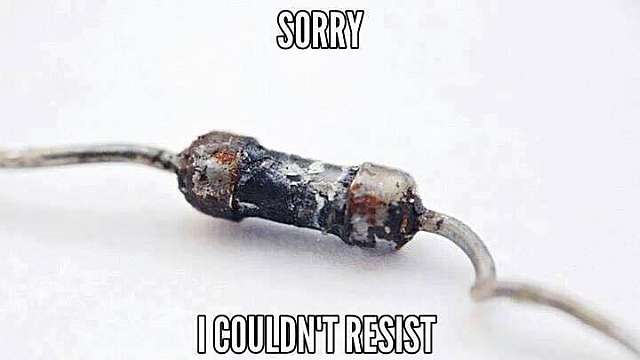
Lulu took a video of me working on some electronics equipment:
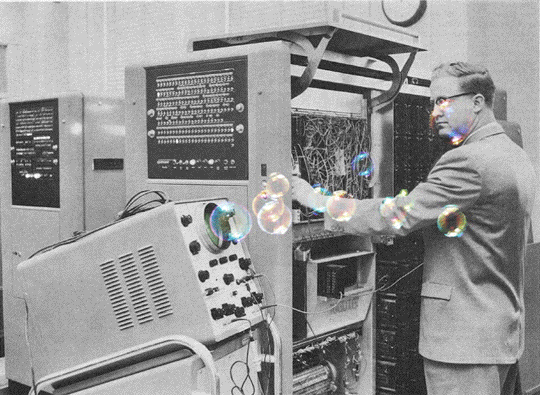
When I was growing up, industrial and military surplus electronics were the way to go for experimenters looking to try stuff out on the cheap. Companies would shut down a product line and all the excess components would be purchased for pennies on the dollar by a number of 'surplus houses' who would sell them for cheap. There were a few in Seattle that I dealt with on a regular basis.
Unfortunately, with most of the manufacturing moving overseas, these markets are drying up and the houses are closing. Another big one bit the dust this new year.
From Ramsey Electronics:
For more than 4 decades, the name Ramsey Kits has been synonymous with some of the neatest and the greatest electronic products and hobby kits for the do-it-yourself hobbyist. In those 40+ years, we always thought “outside the box” when we designed a new kit, making us known worldwide as the number one hobby kit manufacturer.
Back in the early 70’s it all started with the infamous “LED Blinky Kit” as our first kit. As the standard first kit sold to schools, scouting groups, and individuals, that one single kit became the very first electronic soldering kit experience for hundreds of thousands of hobbyists. And from that very first kit with only 10 components in it, the 16 page manual was written to delve deep into the circuit to cover how and why it works, in a fun and very easy to understand format. This practice followed over all these years, some 311 products later, earning us praise from everyone from teachers, educators, and engineers, to school children, scouts, and do-it-yourself hobbyists.
While our Hobby Kit Group was busy churning out the kits and products you’ve become so familiar with, our Professional RF Test Equipment Group was busy achieving similar milestones in that industry. From the largest manufacturer of RF pager test equipment, the world’s largest pager test training school, the world standard for cost effective communications service monitors, to our patented RF Isolated Test Enclosures, Ramsey Test has become equally synonymous as the most trusted RF Test Enclosure manufacturer worldwide.
The rapid changes in technologies have made it difficult for the do-it-yourself hobbyist. You just don’t go out and build yourself an 802.11ac wireless router these days! You buy one at the corner big-box store for fifty bucks! One of my favorite kits I personally built was a 25” Heathkit GR295 color TV! It was considered ahead of its time for TV’s, and you had to build it. You just can’t do that today either.
Therefore, following our well respected predecessors like Heathkit, KnightKit, Eico, and others in the past, we are discontinuing our Hobby Kit Group January 1, 2016.
I have built a lot of Ramsey kits. Their little FM stereo transmitters were awesome - great sound and range in a $40 kit. Amazon is selling off the residue of their kits - these are excellent value for the money.
I pity the fool who has their audio equipment worked on by these people. From an advertisement in the L.A. Craigslist - screencap in case the ad goes away:

All this and they start at $12/hour?
In Los Angeles?
Like I said, I pity the fool who sends their vintage synthesizers to them for work.
Digital is all the rage these days and for good reason. The real world is analog however - temperature, air pressure, sound, electricity - these are always perceived and measured in the analog realm. Unfortunately, most electrical engineering programs focus exclusively on the digital realm.
Texas Instruments' primary business is making chips to do various functions - a lot of these chips are analog. They came out with a training circuit board for university classrooms and at only $99, it fits right into the hobbyist's workbench as well.
From the TI Website:
Everything that an analog engineer needs
ASLK PRO comes with three general-purpose operational amplifiers (TL082) and three wide-bandwidth precision analog multipliers (MPY634) from Texas Instruments. We have also included two 12-bit parallel-input multiplying digital-to-analog converters DAC7821, a wide-input non-synchronous buck-type DC/DC controller TPS40200, and a low dropout regulator TPS7250 from Texas Instruments. A portion of ASLK PRO is left for general-purpose prototyping which can be used for carrying out mini-projects.
There is also a comprehensive parts kit for $70 - the price is actually very good as the kit is extensive.
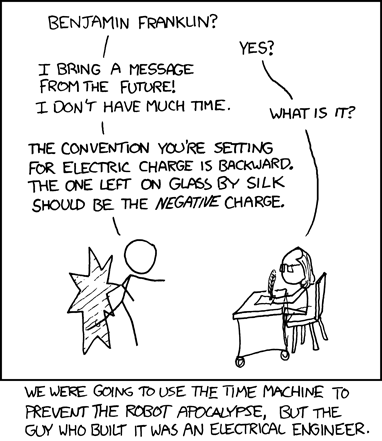
Ran into this little gem from an electronic music website. From electro-music.com
Be very careful when ordering resistors from china!
A while back I was selecting 100k resistors for the summing stage of a VCO, the most common value in my belt was something like 100.6k
when I later wanted to select from that group the values where nowhere near what I had initially measured, even worse .. the longer I measured a resistor the lower its value got.
I first thought the multimeter was at fault, but another one gave me the same readings.
So then I suspected the resistors ( having seen fake transistors I wondered if they would mess with something as cheap as a resistor )
I took a few resistors and decided to do some temperature testing on them, I picked a "suspect" resistor, a carbon film resistor desoldered from a board from the junk box, a resistor from farnell, one from Conrad, and another one from a local shop.
I tied them to a power resistor together with a temperature probe and plotted the resistance versus the temperature.
The result is quite clear, I bought two sets of resistors from two different suppliers and both where ordinary 5% carbon film resistors marked as 1% metal film.
The fake ones are fairly easy to spot
1. Most if not all fake resistors I had had iron leads ( a magnet will help you out there )
2. The leads of these resistors are VERY flimsy
3. if you heat them ( soldering iron ) the resistance drops, in a metal film the resistance increases (slightly).
So be very careful where you buy, especially for synth applications the precision and the temperature coefficient really matter!
This is absurd. The cost difference between the 5% tolerance carbon and the 1% tolerance metal film is a few pennies at most.
The graph at the website makes it crystal clear the difference between the genuine 1% metal and the Chinese fake.
This is not exactly tesla coil stuff but it is interesting and has to do with large sparks.Just WOW!
Saturday night we had another thunder storm and tornado warnings. Lightning struck the house. There is a 19" hole in the roofing shingles and plywood on the roof. Directly below the 19" hole is a 7" diameter hole in the sheet rock ceiling in the upstairs bedroom. The bedroom floor has a 28" diameter hole in it. Down stairs the 28" diameter hole is directly over the refrigerator. The refrigerator measures 30" x 33". Several of the circuit brakers in the main panel were tripped. The 36" TV in the living room is fried. There was no fire and not even a sign of anything burned. All the holes look like a shotgun blast made them. The wood around the edge of each hole is splintered like all the wood that is gone was ripped away. We were in the living room watching TV at the time when it happened it sounded like a stick of dynamite went off in the kitchen. The TV made some cracking sounds and went off. There was a large flash of light from the kitchen area that reflected through the house. There was also a strong smell of smoke like something had burned. The burned smell had to be the wood that was missing from the holes because there was very little wood pieces laying round to clean up. The Insurance Company is refusing to pay for the TV since it was in the living room 20 feet away it could not have been struck by lightning. Allstate is being a jerk, your not in good hands with Allstate. The variation in hole sizes is very interesting.
City sues man for canceling trash serviceSan Carlos is in California just south of San Francisco. Sheesh -- how about encouraging people to do good instead of just giving it lip service and punishing them when they actually walk the walk...
A man who claims to have reduced his waste to nearly nothing out of concern for the environment now faces a lawsuit from San Carlos for canceling his garbage-collection service.
Eddie House, 53, says he was shocked when he was served with a lawsuit Sunday at his Cedar Street home.
The lawsuit, filed by San Carlos Deputy City Attorney Linda Noeske in San Mateo Superior Court on Jan. 22, seeks a permanent injunction forcing House to maintain garbage service. City officials are also seeking to recoup from House the costs of the lawsuit.
The lawsuit claims House broke the city�s municipal code requiring all residential, commercial and industrial properties to contract with Allied Waste for pickup at least once a week � a standard requirement in most cities, San Carlos Deputy City Manager Brian Moura said.
House says he stopped his service with Allied Waste about a year ago after realizing that his garbage cans were nearly always empty.
�It�s just me and my dog, so I don�t have a whole lot of garbage to begin with and I recycle everything,� he said.
This site is a free non-profit repository of materials from GAP/R George A Philbrick Researches, the company that launched the commercial use of the Operational Amplifier in 1952.The design of the Operational Amplifier was one of those watershed moments in electrical engineering. Here was a circuit that could be made to do a lot of different functions, the selection of which was determined by only a handful of external components. A true "magic box". Growing up, I was aware of Philbrick during his Teledyne Philbrick incarnation and when I became interested in electronic music and sound effects, the op-amp was a key component in virtually any circuit you could build -- oscillator, filter, mixer, envelope generator, sequencer -- you name it and it had op-amps in it. A very cool resource...
I dedicate this site to the many engineers that gave the Analog industry its great start with their state-of-the-art Philbrick products, and by setting new professional standards, and creating new ways to solve engineering problems with the application of analog elements. After Philbrick, these engineers went on to lay the foundations of the analog industry in new companies like Linear Technology, Analog Devices and National Semiconductor, among many others.
The first commercial Operational amplifier was the K2-W op-amp. It was based on the amplifier used in the Philbrick modular Analog-Computor "black boxes". That amplifier's basic circuit architecture, in turn, was probably inspired by an earlier amplifier designed by Loebe Julie (Dan Sheingold and Bob Pease, thanks for helping me with this information). The K2-W Operational Amplifier entered the commercial market in 1952. It performed mathematical Operations in analog computers. Soon after, the K2-W and its successors saw wide application in industry. The Analog Computer was one educational vehicle to familiarize the engineer and the engineering student, with Operational Amplifier techniques. GAP/R also took on a crucial educational leadership role with application guides and tutorials.
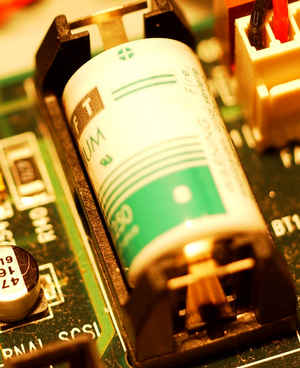
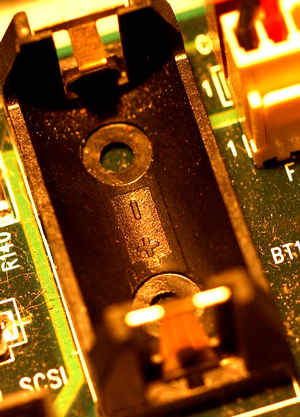

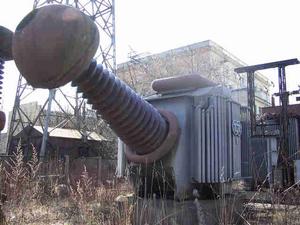

Stealing Celestial FireHere is a photo of the equipment in operation:
A laser has sparked artificial lightning in a laboratory, a first step toward controlling real thunderbolts
There has to be a better way of tapping a lightning bolt than flying a kite in a storm, and a group of French and German scientists just may have found one. They have demonstrated in a laboratory that shining powerful laser pulses between two electrodes elicits a controllable form of lightning. They hope that their invention will eventually help to fend off lightning strikes on airports and power stations.
They employed their Teramobile laser, whose pulse lasts for a mere 100 femtoseconds and packs a peak power of 5 terawatts. The pulse rips the electrons from air molecules, creating a plasma; it also changes the refractive index of the air, a phenomenon called the Kerr effect. The effect focuses the light just enough to balance plasma-induced diffraction, creating a straight and highly conductive channel, called a filament, which can stretch up to 3.8 meters between the charged electrodes.
In the experiment, a 1- to 2-megavolt electrode simulates a thundercloud and an electrically grounded plate simulates the earth. The laser-induced filaments short-circuit the electrodes, triggering an electric discharge much like a lightning bolt. To complete the simulation, the researchers sprayed water between the electrodes. "We expected that the 'rainwater' would scatter light and perturb the filaments, but the filaments survived the interaction," says J�r�me Kasparian, a lead investigator and a member of the group from the University of Lyon, in France. Another team hails from the �cole Polytechnique, in Palaiseau, France; two others come from the Free University of Berlin and the Friedrich Schiller University, in Jena, Germany.
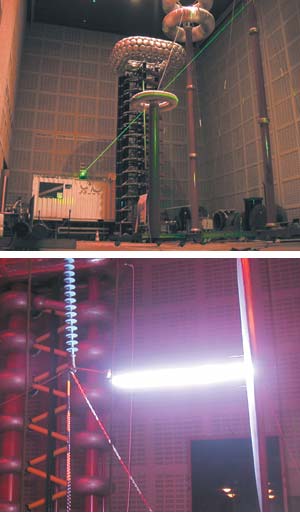
Take a look at Magnetricity The webmaster -- Rex Hebert -- is not only good at electronics, he has an excellent sense of design.
His website is one of the few that I like which violate the "no music" and "no animation" for the opening screen. Both are short, lush and fit the concept of the site.
Check out his Photoshop skills on these colorized photographs of Nikola Tesla and his laboratories. (Scroll down past the quotes although the quotes are very much worth reading as well...)
Nikola Tesla invented a few things that you may use from time to time.
The list goes on and on. My only gripe with this site is that Rex is also interested in "zero point" energy and generators that yield more out then put in. He has done some gorgeous work in designing and machining this unit but there are some simple laboratory mistakes that can trick people into thinking that more energy is coming out of a system then is actually there.
I don't see any hard data in his NeoGen page -- it will be interesting to check in from time to time to see what is developing.
A very interesting company and product: OOPic. I found it while looking at the D.I.Y. submarine site I wrote about yesterday. Computer programming these days is done with Object Oriented Code - a device or a routine is not unique to itself, it is an "object" with properties and one object can be reused many times with different properties instead of having to be written each time. Saves a lot of time for the programmer and the code is just as fast to run. There is a very active area of experimentation with small "embedded" systems - systems which are specific purpose (controlling a microwave for example) and have a minimal input and output functions (as opposed to the full keyboard, mouse and video of a PC). These units generally have a lot of general purpose inputs and outputs - digital and analog. OOPic seems to be the first embedded system board that offers Object Oriented programming. Here is what one of their boards looks like:

Cost is about $70 for the board plus all of the programming software. It can be programmed in C or a Visual Basic clone. Looks very interesting. For our Hard Cider and Mead business I am looking at using embedded systems to monitor tank temperature and fluid management. I have a lot of experience in the older Intel 8051 embedded processors and was looking at using them but this deserves a close second look...
Calgary Herald has a followup article on the McIntyre/McKitrick temperature re-analysis:
Kyoto critics better duck
Global warming industry doesn't want to hear that their pet project is flawed
Michael Campbell
For the Calgary Herald
Tuesday, November 04, 2003
When you question a multi-billion-dollar windfall, you'd better look out and, make no mistake about it, the Kyoto protocol translates into monster money for many researchers, bureaucrats and public institutions.
Kyoto is also perhaps the most potent weapon in the arsenal of those who oppose western capitalism and push instead for massive intervention.
That's why Toronto-based analyst Steve McIntyre and University of Guelph economics professor Ross McKitrick had better be battening down the hatches. Their paper, published last week in the respected British journal, Energy and Environment, is arguably the most damaging attack to date on the science behind Kyoto.
In a nutshell, they convincingly reveal that flawed calculations, incorrect data and a biased selection of climate records led Kyoto linchpin Michael Mann of the University of Virginia to declare that the 20th-century temperature rise was unprecedented in the past millennium. After correcting the data and then employing Mann's own methodologies, they found no such increase in global temperature variations had taken place, which places Kyoto's whole rationale in question.
The Canadian study comes on the heels of a recent Harvard climate study that made headlines in the scientific community by arguing that we are not living in the warmest period in the past 1,000 years, as Kyoto proponents claim. The authors, Willie Soon and Sallie Baliunas, reviewed more than 250 research papers in the peer-reviewed scientific literature on past climate and concluded temperatures were higher in medieval times, from about 800 to 1300, than they are now.
Upon reviewing the study, David Legates, director of the Centre for Climatic Research at the University of Delaware, stated that it should lead the scientific community to the "inescapable conclusion that climate variability has been a natural occurrence."
A year ago, respected scientist Christopher Essex observed, "global warming ceased to be the subject of scientific debate years ago," but that sorry state of affairs now seems to be changing as an increasing number of scientists, even before the recent Canadian study, were recoiling against the political hijacking of the debate.
In September, at the closing session of the UN's World Climate Change Conference in Moscow, the conference chairman acknowledged that scientists who questioned the Kyoto "consensus" made up 90 per cent of the contributions from the floor. They pointed to numerous flaws and doubts in the scientific case underlying worries about climate change.
Keep in mind that this new research focuses on the science of climate change and doesn't include the numerous attacks on the economic analysis and modelling in Kyoto that John Reilly of the MIT Joint Program on the Science and Policy of Global Change declared were "an insult to serious analysis."
Asked why he changed his position on a particular issue, John Maynard Keynes once responded, "Sir, the facts have changed and when the facts change, I change -- what do you do, sir?"
In the case of Kyoto, the answer is predictable -- shoot the messenger. Both McKitrick and McIntyre can expect an avalanche of personal attacks from the politically motivated. In Canada, far too much money is at stake to derail the Kyoto juggernaut.